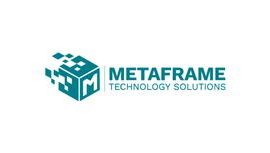Standing out from the crowd – using technology to differentiate your investor relations process
By Matthew Cartwright, Co-Founder and Co-CEO , investOrbit
Published: 31 March 2015
At the recent “AIMA in Asia 2015” conference in Hong Kong, during the afternoon session, the subject of investor transparency was raised. Using real-time voting and analysis devices, the large audience was able to express its opinion on topics including contentious areas of discussion with investors, the level of transparency afforded to investors and the biggest concerns regarding interactions with investors.
The answers that were provided show that at the outset of 2015 the subject of investor relations is still a high priority (32% voted it as being the most contentious area, slightly behind fees at 41%), a concern (49% voted the ‘fair and equal treatment of investors’ as their biggest concern in their investor interactions, far ahead of ‘regulatory risk’ at 21%), and a business process in need of greater standardization (37% disclosed that they decided the level of investor transparency on a ‘case by case ‘ basis).
This article proposes three things: 1) that investor relations should be a priority for all fund managers, 2) that a more systematic approach to investor relations will be increasingly important for fund managers, and 3) that using technology not only helps the fund manager achieve a base line of compliance and efficiency, but can help the manager differentiate itself in an increasingly competitive industry.
Investor relations should be a priority for all fund managers. It sounds obvious: fiduciaries have an explicit obligation of care, and the entire relationship is founded on the basis of trust. In its most modern context, the attraction and retention of capital is what keeps all fund management organisations alive. Good performance by fund managers ensures that investors can meet obligations and deliver results to their constituents, and keeps the relationship fruitful. The management of the relationship and the flow of information are what preserve the relationship. Investor relations maintains trust, which is the foundation of the fiduciary interaction. Investors are demanding more from managers in terms of reporting and disclosure. Managers have in the recent past either responded by increasing their allocation of time and/or human resources to meet these higher expectations, or have not - and have faced redemptions in standoff situations.
Investor relations should be a priority not only because it facilitates the communication and trust that underpin the fiduciary relationship, but because it addresses a fundamental business risk as well. In the wake of the global financial crisis, there were a lot of data points with which to examine investor behaviour. The huge capital outflows and subsequent reallocations gave managers great insight into their investors’ behaviour in stressed market conditions. As a former Head of Risk Management I always considered that investor relations was in essence a risk management tool. Well-educated investors responded well to portfolio events, and poorly educated investors responded less well. Whilst portfolio events are not always under the fund manager’s control, its investor relations philosophy and approach absolutely are. Waiting until a negative portfolio event to communicate with investors is a recipe for redemptions, whereas continual and systematic efforts are the key to retaining capital. Essentially, a manager’s approach to investor relations can go a long way towards mitigating a fundamental business risk: capital flight.
If investor relations is the underpinning of the fiduciary relationship between manager and investor, and indeed a tool to mitigate capital flight in difficult times, then it should be a priority for all managers. However, today’s environment for fund managers is a challenging one, and implementing an effective investor relations function using traditional methods is a non-trivial problem. Investor requirements are variable, the competition for investor allocations is intense, and regulatory oversight is increasingly focused on investor – manager interactions. Fund managers today are under pressure from all corners to raise the bar and improve their investor relations standards.
The traditional response to increased reporting requirements from investors has been to increase human resources internally, and engage the services of fund administrators, prime brokers and other such service providers. However, this has favoured the larger fund managers who either have the resources to increase headcount internally, or have the volume of business with third party trading counterparties or custodians to warrant more ‘red carpet’ treatment. All but the large fund managers out there are forced to look to other solutions to keep on top of the changing requirements. That being said, regulatory pressure for equal disclosure of information to all investors (especially strong in the US, increasing in Europe, and expected in Asia) forces managers to consider a systematic approach, regardless of their size. A systematic approach requires having an investor relations process that is highly structured and accountable when it comes to the dissemination of information to investors at all stages of the investment process. The benefits of this approach are numerous, and go beyond simply remaining in line with regulations.
Fortunately, today, we see advancements in, and broad acceptance of, cloud technology. Innovative systems are coming to market, designed to keep a manager’s investor relations professionals synchronised with their investors around the world, and to facilitate better operational efficiency and higher standards of investor interaction. Now managers have the opportunity to implement a systematic approach to investor relations through technology. This achieves greater internal efficiency, and ensures that the manager can stay on top of investor communications and regulatory requirements for reporting standards. Furthermore, a fund manager can differentiate itself through the technology choices it makes.
Standing out from the crowd, attracting and retaining capital, honouring the foundation of the fiduciary relationship, and staying in line with the highest standards of investor reporting and regulatory compliance are now all possible with technology. Choosing the right system gives a manager a better chance now than ever before of keeping its investors close and well educated, whilst achieving operating efficiency in this increasingly challenging business area. Indeed, the right use of technology can give managers a reputational advantage in an increasingly competitive industry. Technology can raise standards and effectiveness in the Investor Relations arena. The future is bright for the fiduciary relationship.
* The author of this article is a member of AIMA's Cybersecurity Best Practices Working Group









